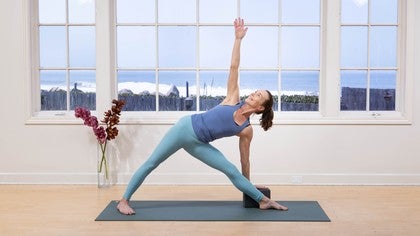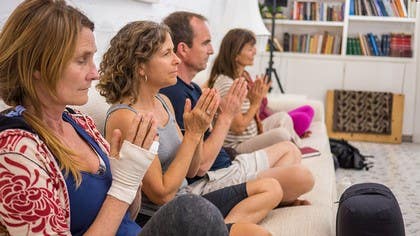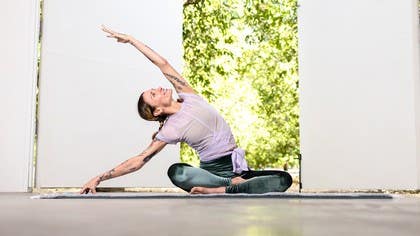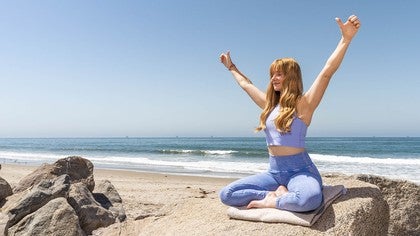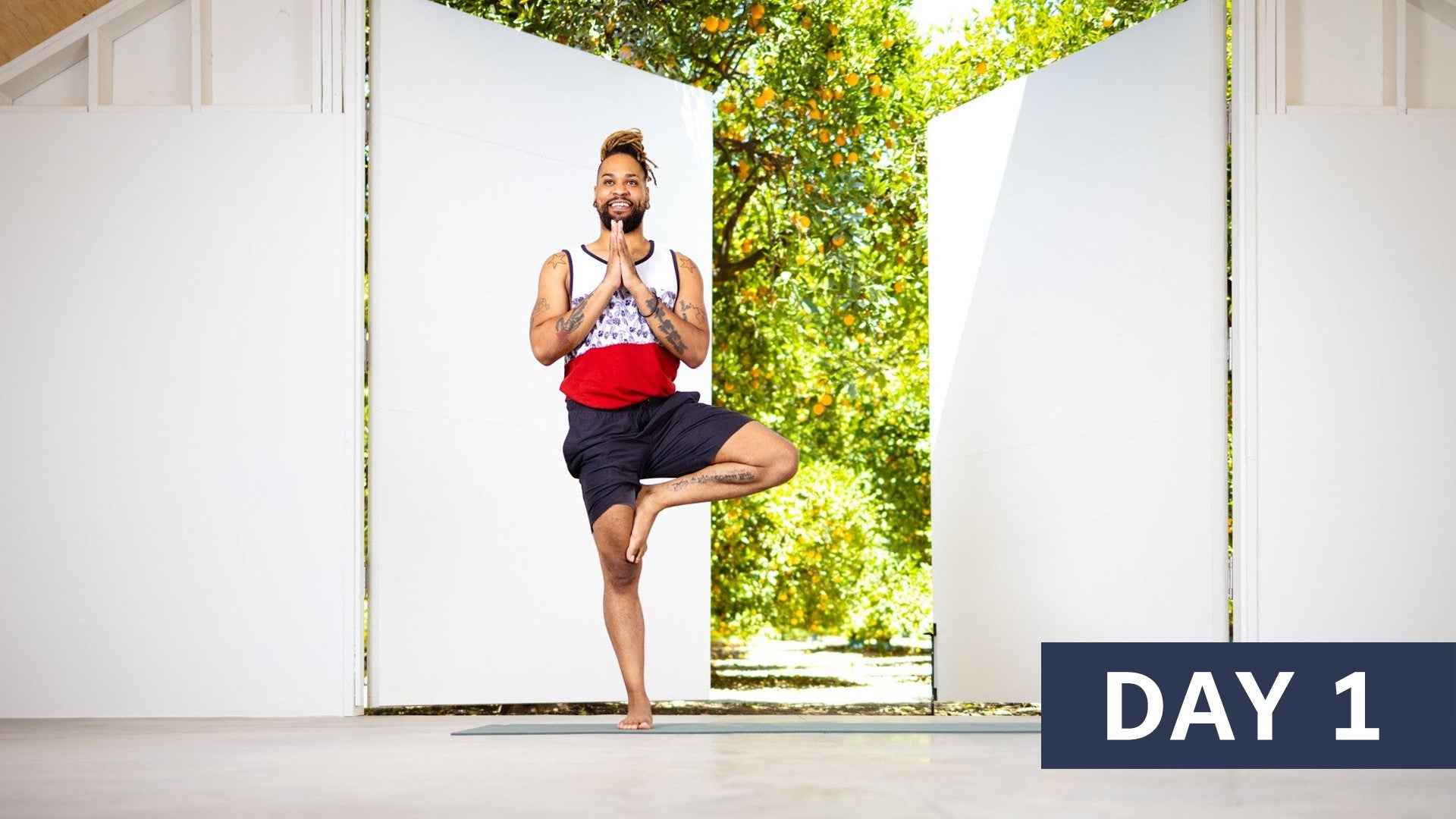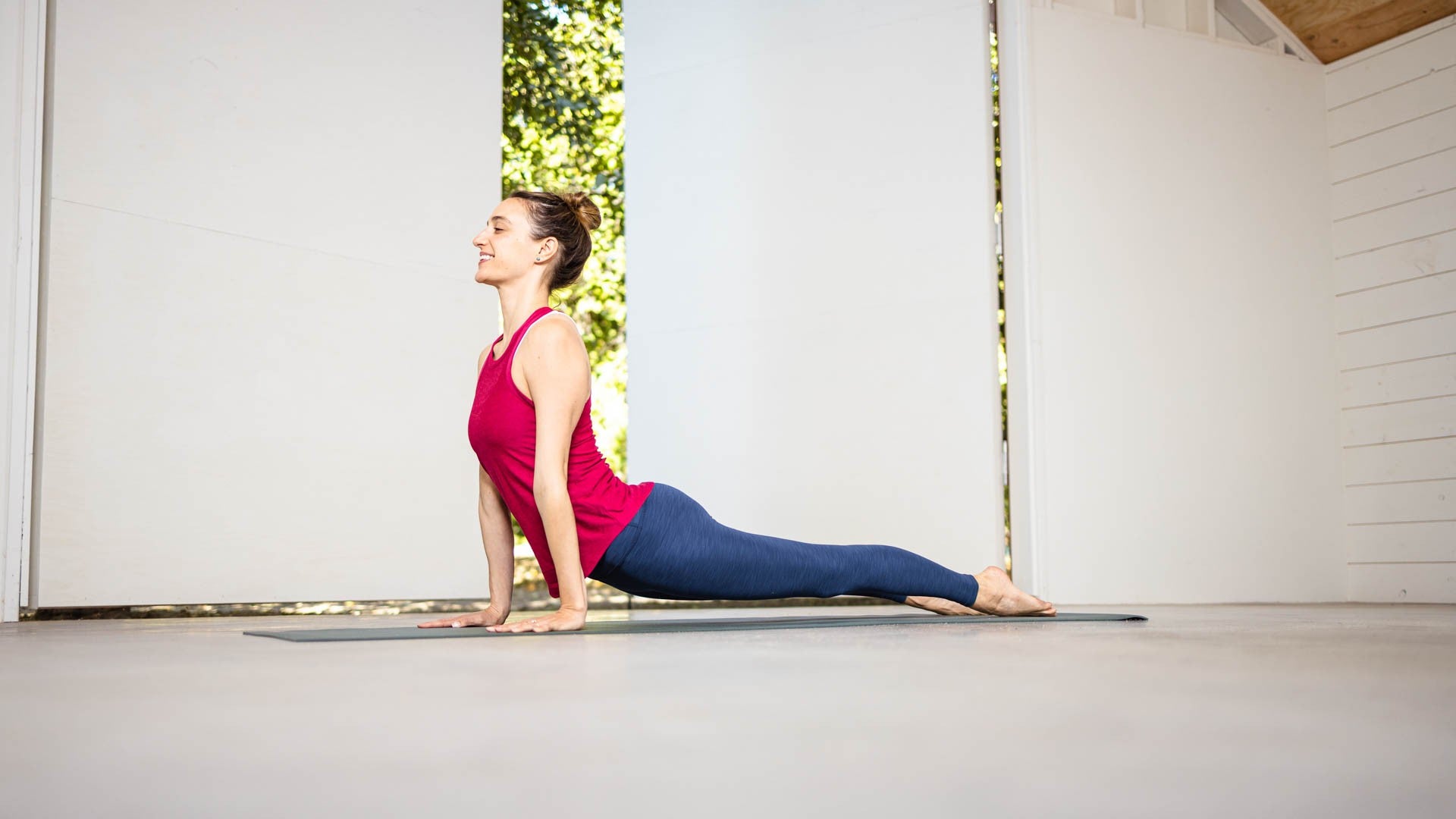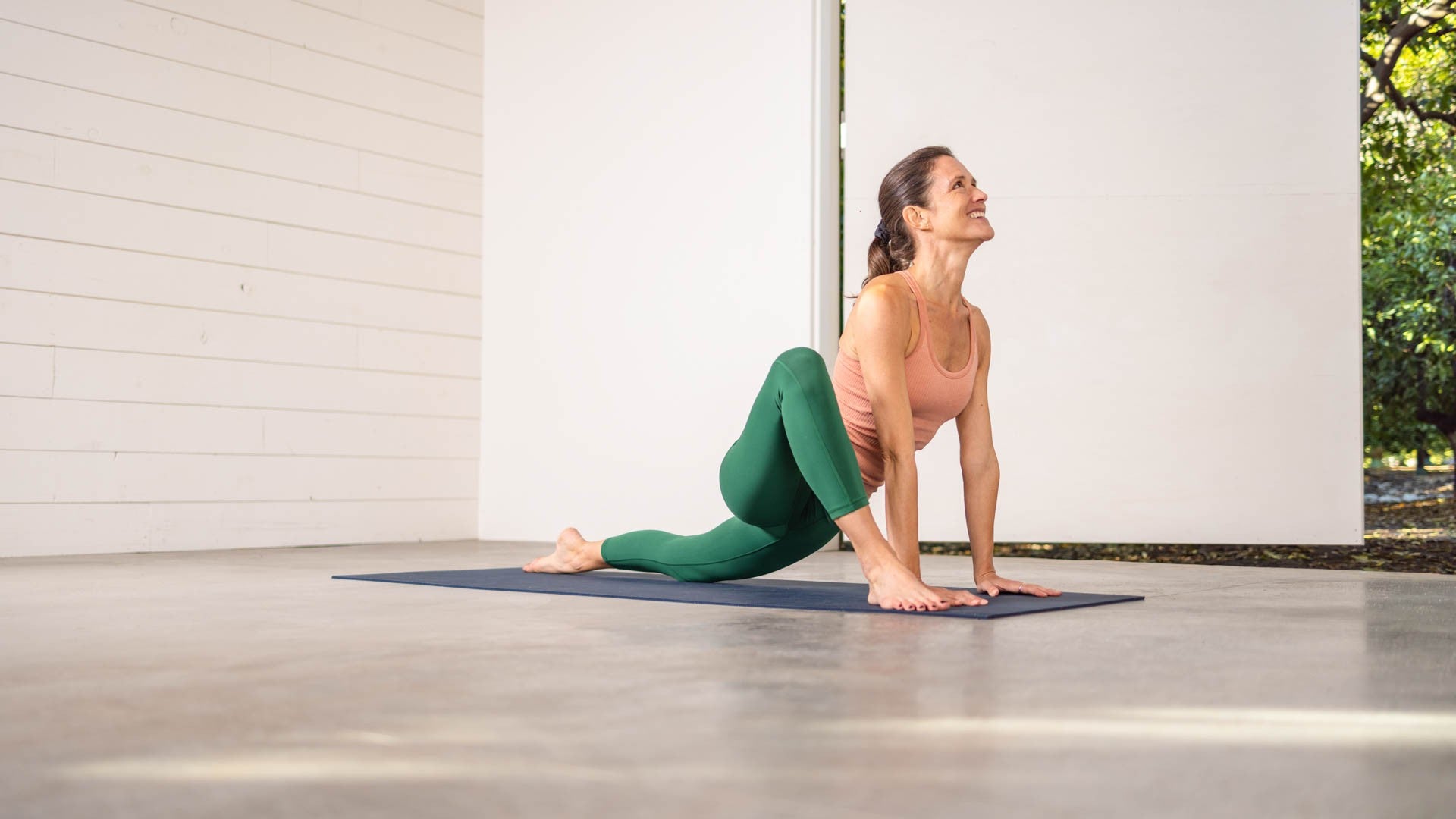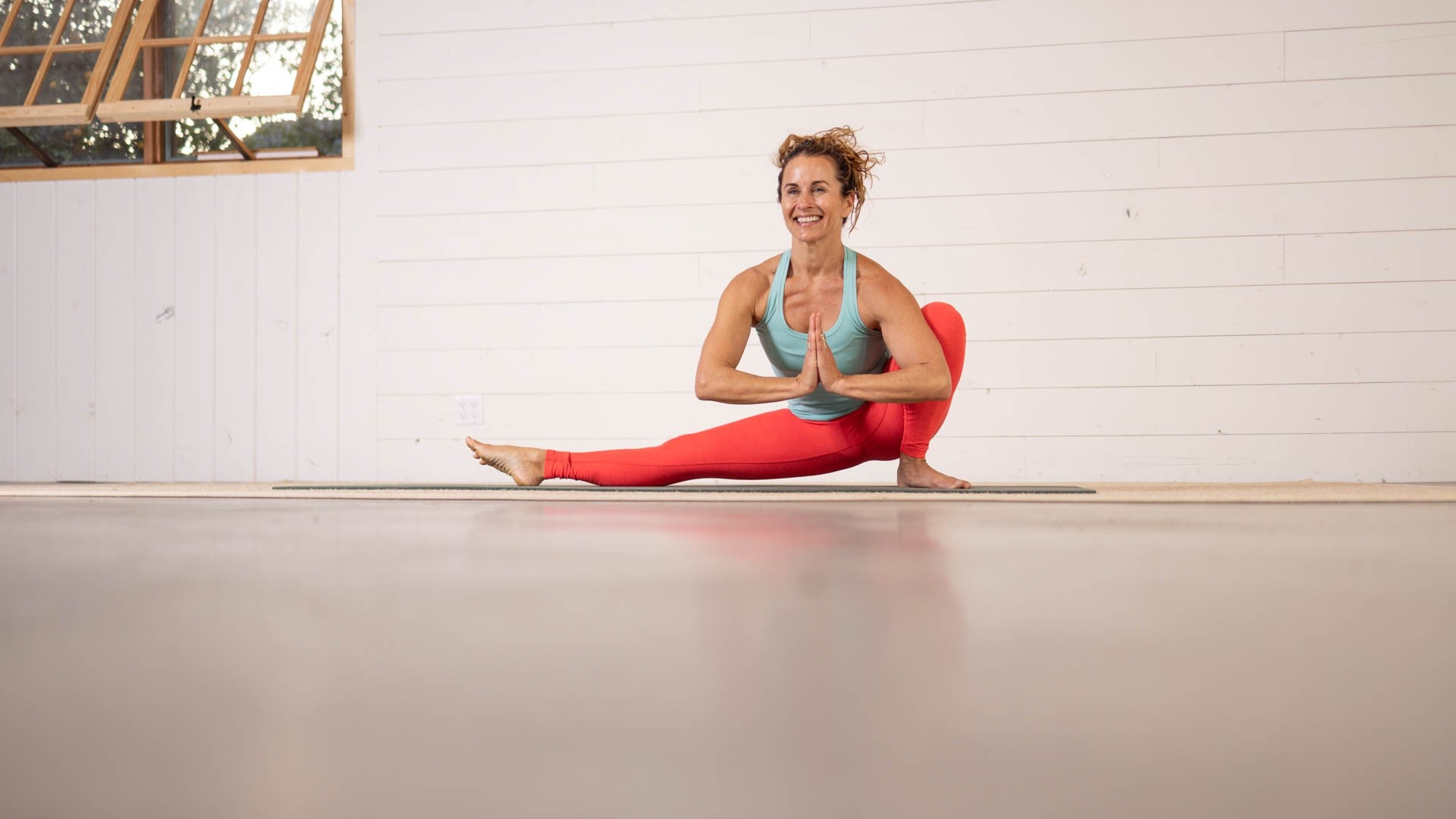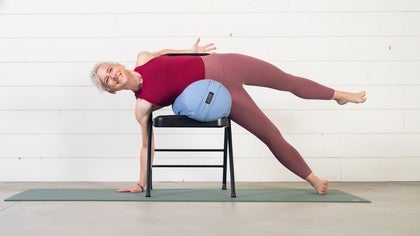
What Is Vinyasa Yoga?
What is Vinyasa Yoga?
"Take a vinyasa," the yoga teacher instructs in vinyasa class.
Wait—is vinyasa a sequence of poses, a style of yoga, or a way of life? Vinyasa yoga can be all of the above. Read on for our primer on vinyasa yoga from its roots in India, to what to expect in a class at your local yoga studio, and how to live vinyasa off the mat.
The Roots of Vinyasa
Let’s go back to the Sanskrit roots. The word vinyasa comes from the Sanskrit term nyasa, which means "to place," and the prefix vi, "in a special way."
If you were to take a yoga class in India in the 20th century with Krishnamacharya, the Father of Modern Yoga, he would have met you at the gates, walked with you inside his center, and led you through a practice designed to address your specific needs in a step-by-step practice. At the end of class, he escorted you back to the gates.
For Krishnamacharya, the practice of vinyasa began before the time on the mat; he composed a meaningful sequence for his students from beginning to end that, taken together, created an experience of consciousness.
This is vinyasa at its broadest application: an arrangement composed with care and intention, and Krishnamacharya’s teachings espoused vinyasa as a holistic life practice.
"Vinyasa is, I believe, one of the richest concepts to emerge from yoga for the successful conduct of our actions and relationships," Krishnamacharya’s son, Desikachar, wrote.
On the Mat
What does vinyasa yoga mean specifically on the mat? In western yoga classes, the most common understanding of vinyasa is as a flowing sequence of poses coordinated with the breath. To place in a special way means more than breathing and moving at the same time.
“We’re never just sequencing a class like, 'Oh what should I do? This one might be fun,’” says Yoga Anytime teacher Shelley Williams. "There's a reason behind how we sequence, from the asanas to energetically, with what the tone is. There's a certain energy that we're trying to cultivate in our practice in order to achieve balance."
To create balance, Williams looks to larger life rhythms as well as the minute details of class. Is it a morning class or an evening class? What day of the week? Where are we in the lunar cycle? What season is it? Everything in class, from the asanas to candles, chosen quotations, and whether or not there’s music, goes toward creating the desired experience of energetic balance.
In her 30-Minute Vinyasa Yoga series on Yoga Anytime, for example, Williams looks to the elements of nature — Earth, Water, Fire, Air, and Ether — to create dynamic, fluid, and invigorating sequences to help us feel vibrant, strong, and alive.
There is also the familiar instruction by many instructors to “take a vinyasa,” which often means flowing through the asanas chaturanga, updog, downdog, or some variation of these postures. You can think of this as a familiar sequence that you will likely encounter in all vinyasa classes.
What to Expect
Each vinyasa teacher approaches the sequencing of class in a unique way, so you can expect a lot of variation between individual vinyasa yoga classes. Look for a teacher whose style most resonates with you. Classes may range from 30 to 90 minutes, and some are better suited for beginners than others.
Expect a dance-like flow of movement between your body’s motions and the in and out flow of your breath.
“In a vinyasa class, you'll flow through sequences of postures that maybe you'll hold for a few breaths, maybe one breath each,” says Williams. “There's a lot of repetition and building upon sequencing, it's a little more choreographed.”
Typically, classes start with warm-ups, such as Sun Salutation variations, followed by standing postures, grounding seated postures, inversions and backbends, before ending in a resting pose savasana. In a well-sequenced vinyasa class, each posture is preparing you for the next one, says Williams.
“When you arrive at that peak pose, you're ready for it physically, you're ready for it energetically, you're ready for it.”
While the pace can vary between instructors, once a vinyasa class gets going it can move quickly with a rhythm of one breath, one posture. This faster pace can lead to a more energetic and intense class, though tempo depends on the instructor.
“If you picture a hill, it usually starts mellow, builds to a peak, and then slopes down the other side and becomes more meditative at the end,” Williams says. “So we're not going 90 miles an hour the whole time.”
Off the Mat
“One of the things that we've learned from vinyasa is about the intentionality of planning,” says Williams. “That intentionality bleeds over into the way you live your life. And I think that's the greater teaching.”If vinyasa is a sequence of actions that awakens and sustains consciousness, then vinyasa as a practice can be brought to our daily lives through the practice of awareness and intentionality.
Say you’re reporting to your desk on Monday morning. “How do I set myself up for success?” Williams asks. “How can I make it enjoyable and also productive?” Maybe you need better lighting, a cup of tea, a stretch break after twenty minutes. Williams describes how for her, the vinyasa of surfing begins when she drinks a smoothie and packs the car with her board, all the way until she takes a shower afterwards.
“Its presence and appreciation and gratitude for whatever it is that you're involving yourself with,” she says. “When you think of it like a vinyasa, it has a beginning, middle, and end. It has an initiation and sustained period, and a culmination, like sunrise to sunset.”
Like day to day, season to season, year to year, like birth to death, the arch of a vinyasa class can be a birth to a death, ending in savasana or corpse pose.
Williams describes how yoga students often begin to see yoga in their days, approaching challenges with more patience or humor, and finding them easier or more meaningful to navigate as a result.
“That’s the juice, right? I mean, it’s great to be able to learn how to do a handstand,” Williams says. “But if you're still having difficulty with your relationships, and life in general, does it really matter that you can do a handstand? I don’t know.”
Comments

You need to be a subscriber to post a comment.
Please Log In or Create an Account to start your free trial.
